The formation of globular clusters and IMBHs
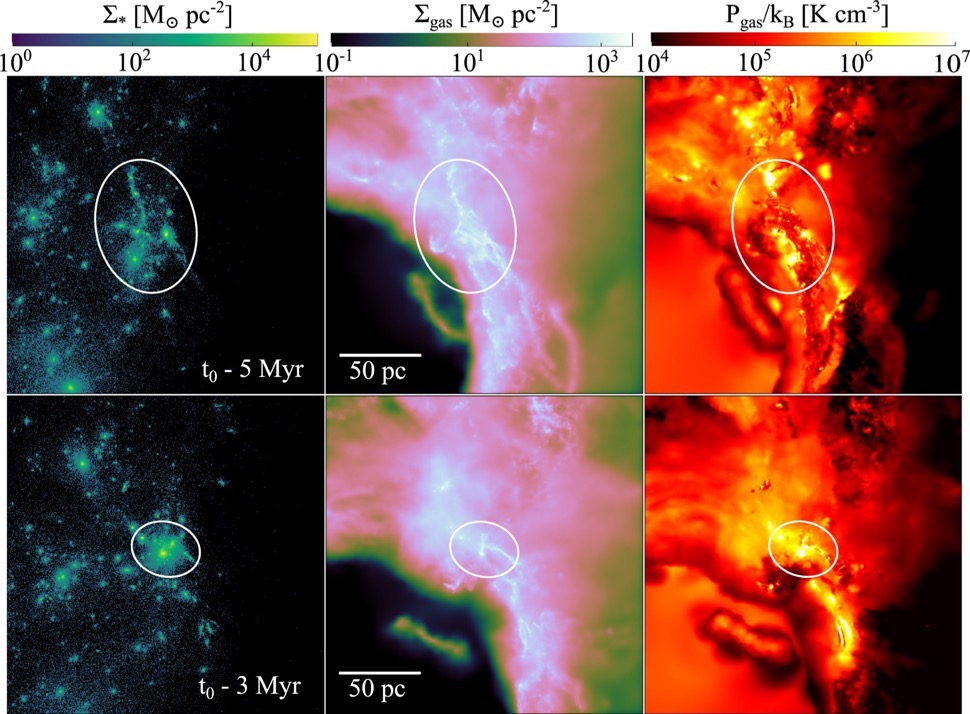
Using a hydrodynamical simulation of a merger of two gas-rich dwarf galaxies, run at sub-parsec and a few solar-mass resolution we have studied the formation of globular clusters. We found that the formation process is terminated by rapid gas expulsion driven by the first generation of supernovae, after which the stellar clusters relax and both their structure and kinematics become indistinguishable from observed local globular clusters. Our simulations present a general model for the formation of metal-poor globular clusters in chemically unevolved starbursting environments of low-mass dwarf galaxies, which are common at high redshifts. The simulations are carried out as part of the GRIFFIN (Galaxy Realizations Including Feedback From INdividual massive stars) project.
Recently we have also studied the formation of intermediate mass black holes (IMBHs) in dense stellar clusters through tidal capture of stars and tidal disruption events (TDEs). We find that in sufficiently dense regions, such as nuclear stellar clusters, TDEs can lead a 300 M☉ BH to reach 7000 M☉ within a Gyr.
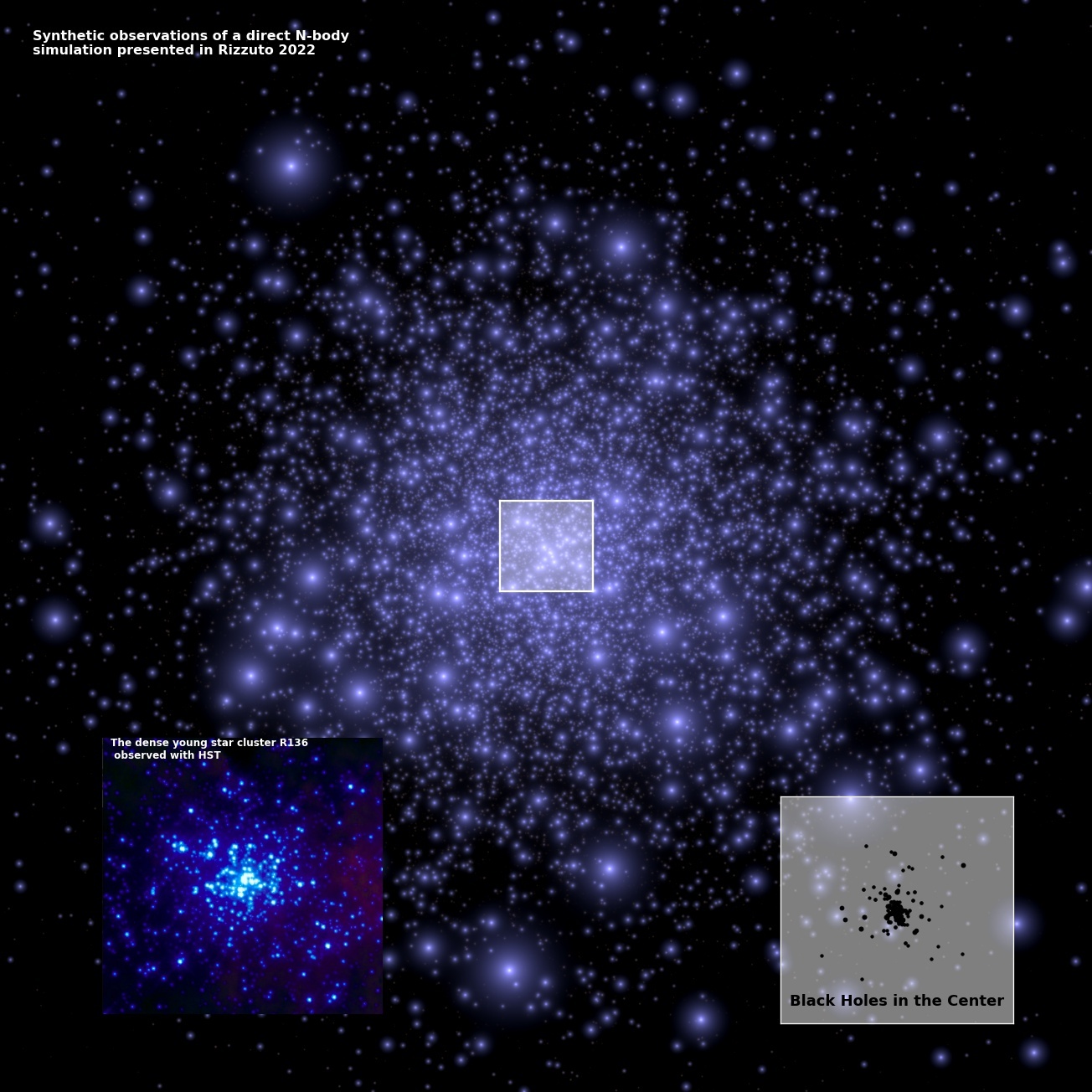
Selected Research Papers
- The growth of intermediate mass black holes through tidal captures and tidal disruption events
- The challenge of simulating the star cluster population of dwarf galaxies with resolved interstellar medium
- Structure and Rotation of Young Massive Star Clusters in a Simulated Dwarf Starburst
- The GRIFFIN Project—Formation of Star Clusters with Individual Massive Stars in a Simulated Dwarf Galaxy Starburst
- The Formation of Low-metallicity Globular Clusters in Dwarf Galaxy Mergers
Radiative transfer in the vicinity of compact objects
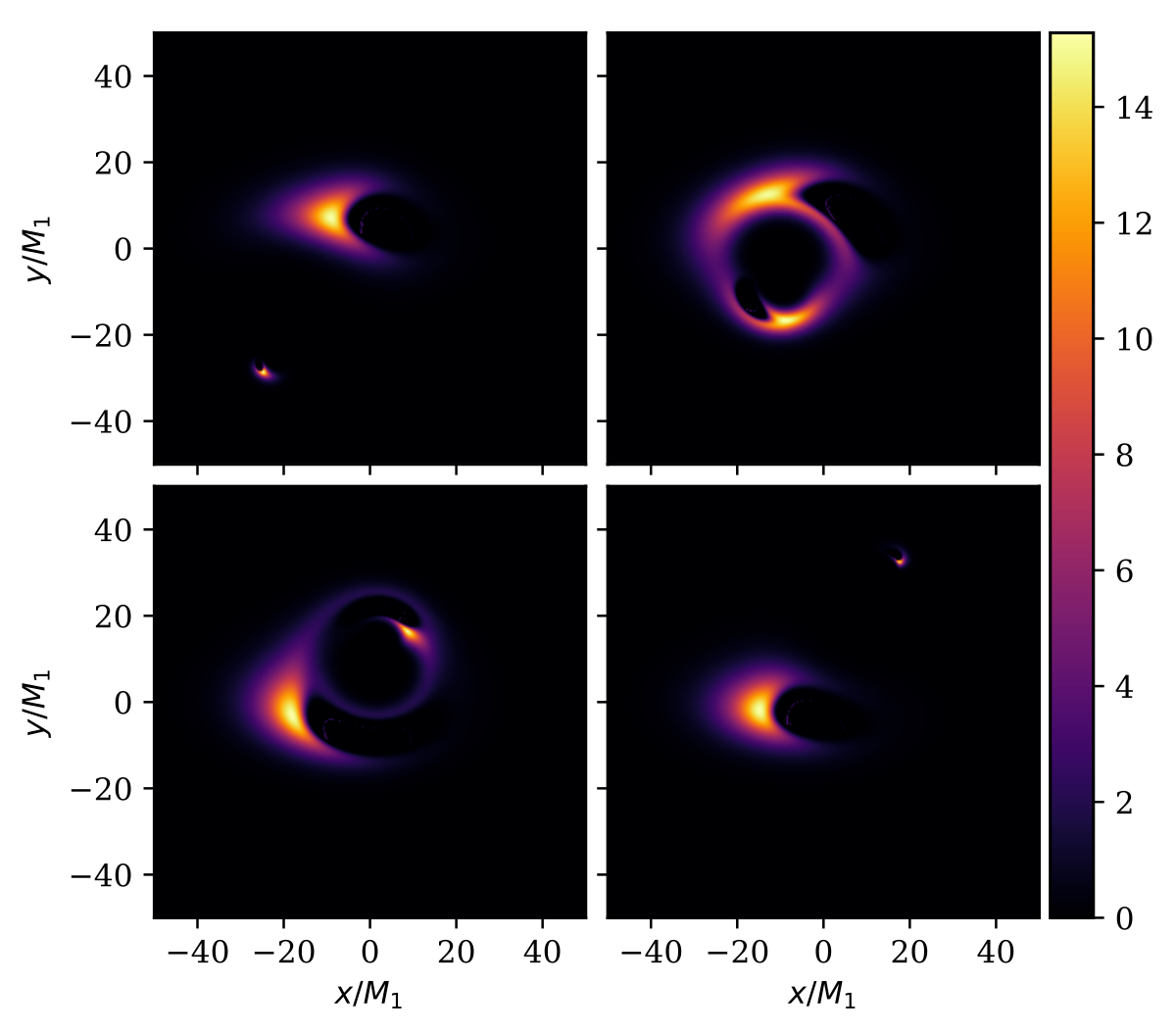
The Arcmancer code (Pihajoki et al., 2018) was developed to allow performing general relativistic ray-tracing and polarised radiative transfer in the curved spacetimes around compact objects such as black holes and neutron stars. The code also includes features for more general calculations involving geodesics and other curves on manifolds of arbitrary dimension with user-specified metrics, including parallel transport of tensors and custom objects, and finding intersections of curves with surfaces. An application leveraging these more advanced capabilities is the generalised barycentric interpolation algorithm described in Pihajoki et al. (2019).
The Arcmancer code is publicly available from here.
Selected Research Papers
- General Purpose Ray Tracing and Polarized Radiative Transfer in General Relativity
- Barycentric interpolation on Riemannian and semi-Riemannian spaces
- Radiation from rapidly rotating oblate neutron stars
The cosmological formation of Early-type galaxies
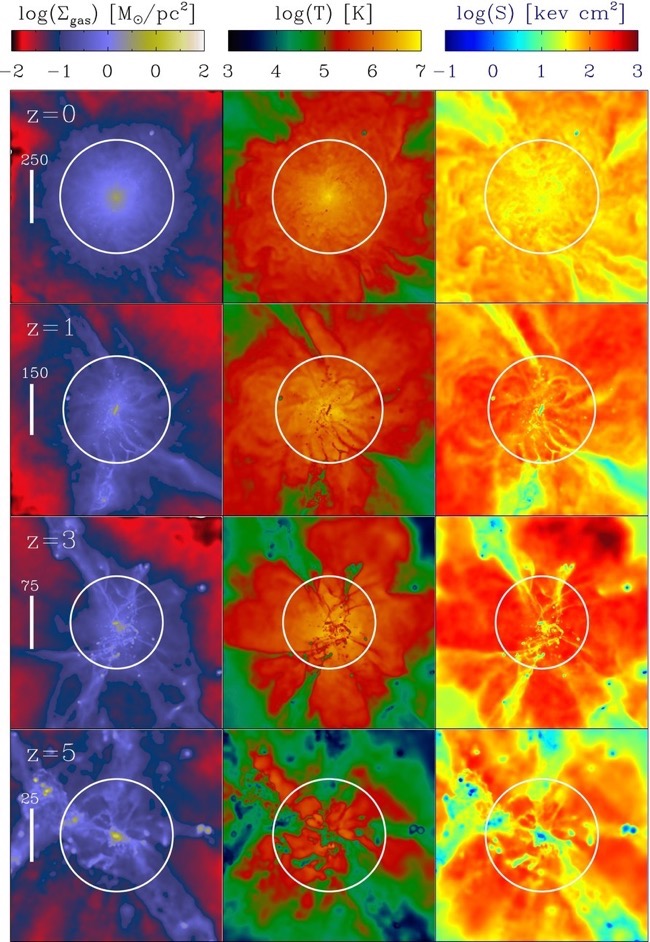
Using cosmological SPH simulations we have been studying the formation of early-type galaxies (ETGs). Our simulations advocate a two-phased formation mechanism, in which the initial growth of the ETGs is dominated by compact in situ star formation, whereas the late growth is dominated by accretion of stars formed in subunits outside the main galaxy. The accreted stars assemble predominantly at larger radii explaining both the size and mass growth of the simulated galaxies in broad agreement with recent observations.
Selected Research Papers
- The co-evolution of total density profiles and central dark matter fractions in simulated early-type galaxies
- The ATLAS3D project - XXV. Two-dimensional kinematic analysis of simulated galaxies and the cosmological origin of fast and slow rotators
- Forming Early-type Galaxies in ΛCDM Simulations. I. Assembly Histories
- The Cosmological Size and Velocity Dispersion Evolution of Massive Early-type Galaxies
- The Two Phases of Galaxy Formation
- Gravitational Heating Helps Make Massive Galaxies Red and Dead
- Minor Mergers and the Size Evolution of Elliptical Galaxies
- Formation of Early-Type Galaxies from Cosmological Initial Conditions
The formation of the first supermassive black holes in the Universe
Recent observations have shown that supermassive black holes with masses in excess of 1 billion Solar masses existed already in the very early Universe at redshifts of above z~7. One possible scenario for forming massive black holes in the early Universe is through the direct collapse of gas haloes in which cooling by molecular hydrogen and metals is not important resulting in a suppression of fragmentation. We have been studying this formation mechanism using adaptive mesh refinement simulations that include live radiative transfer. In a study published in Nature Astronomy, we explored the synchronized formation scenario, in which the near simultaneous collapse of two haloes triggers the formation of a direct collapse black hole in the secondary halo.

Selected Research Papers
- Rapid formation of massive black holes in close proximity to embryonic protogalaxies
- Positive or negative? The impact of X-ray feedback on the formation of direct collapse black hole seeds
- Forming supermassive black hole seeds under the influence of a nearby anisotropic multifrequency source
- The effect of dark matter resolution on the collapse of baryons in high-redshift numerical simulations
- The Direct Collapse of a Massive Black Hole Seed under the Influence of an Anisotropic Lyman-Werner Source
- Numerical resolution effects on simulations of massive black hole seeds
The formation of galaxies through galaxy mergers
Numerical merger simulations in which two galaxies are set in isolation on a parabolic collision trajectory is a powerful tool in studying the formation and subsequent evolution of galaxies. Using this merger setup we have studied in particular the impact of supermassive black hole feedback on merging galaxies. In addition, we have studied the kinematic properties of the resulting merger remnants and compared their properties to observations, in order to assess if galaxy mergers are a viable method for forming early-type galaxies.
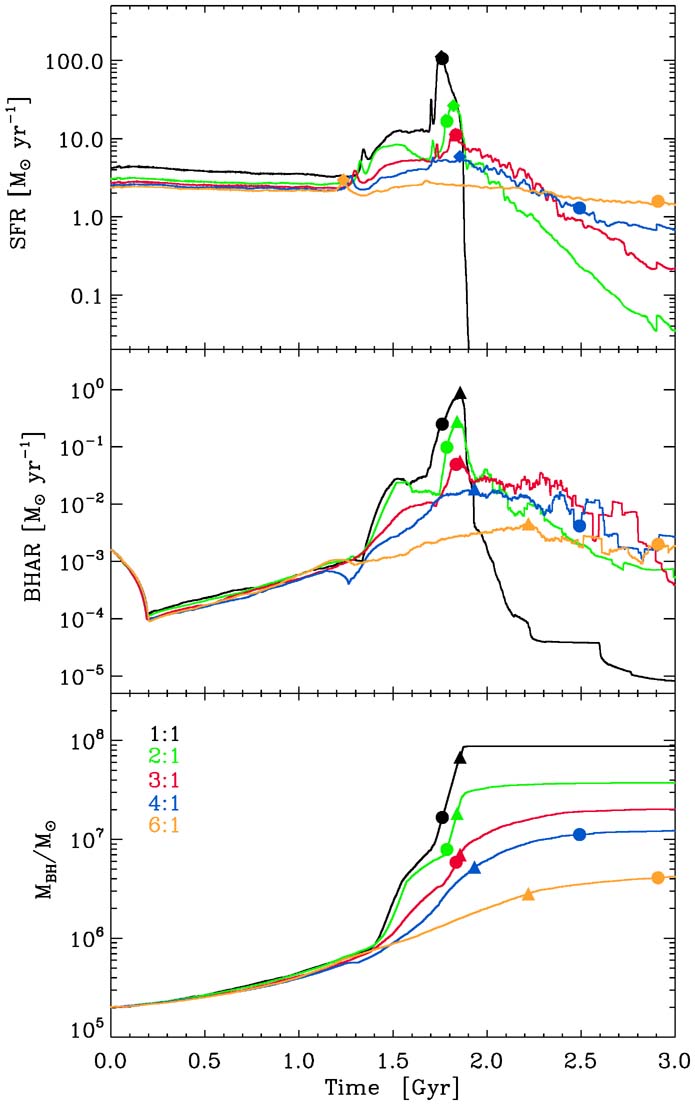
Selected Research Papers
- Consequences of mechanical and radiative feedback from black holes in disc galaxy mergers
- The Mystery of the σ-Bump—A New Signature for Major Mergers in Early-type Galaxies?
- The Dark Halo—Spheroid Conspiracy and the Origin of Elliptical Galaxies
- Radiative and Momentum-based Mechanical Active Galactic Nucleus Feedback in a Three-dimensional Galaxy Evolution Code
- The Evolution of Black Hole Scaling Relations in Galaxy Mergers
- Equal- and Unequal-Mass Mergers of Disk and Elliptical Galaxies with Black Holes
- Termination of star formation by BH feedback in equal- and unequal-mass mergers of disk and elliptical galaxies
The reproduction of observed galaxy mergers with simulations
In these research projects, which are carried out in close collaboration with observers, we use numerical merger simulations in an attempt to reproduce the properties of observed merging galaxies. The correct merger initial conditions are sought by matching the general geometry, kinematics and star formation histories of the merging galaxies. Using numerical simulations enables us to better understand how different galaxy mergers evolve as a function of their initial morphology and gas fraction. In addition, with the help of simulations we can better understand the past and future of observed galaxy mergers.
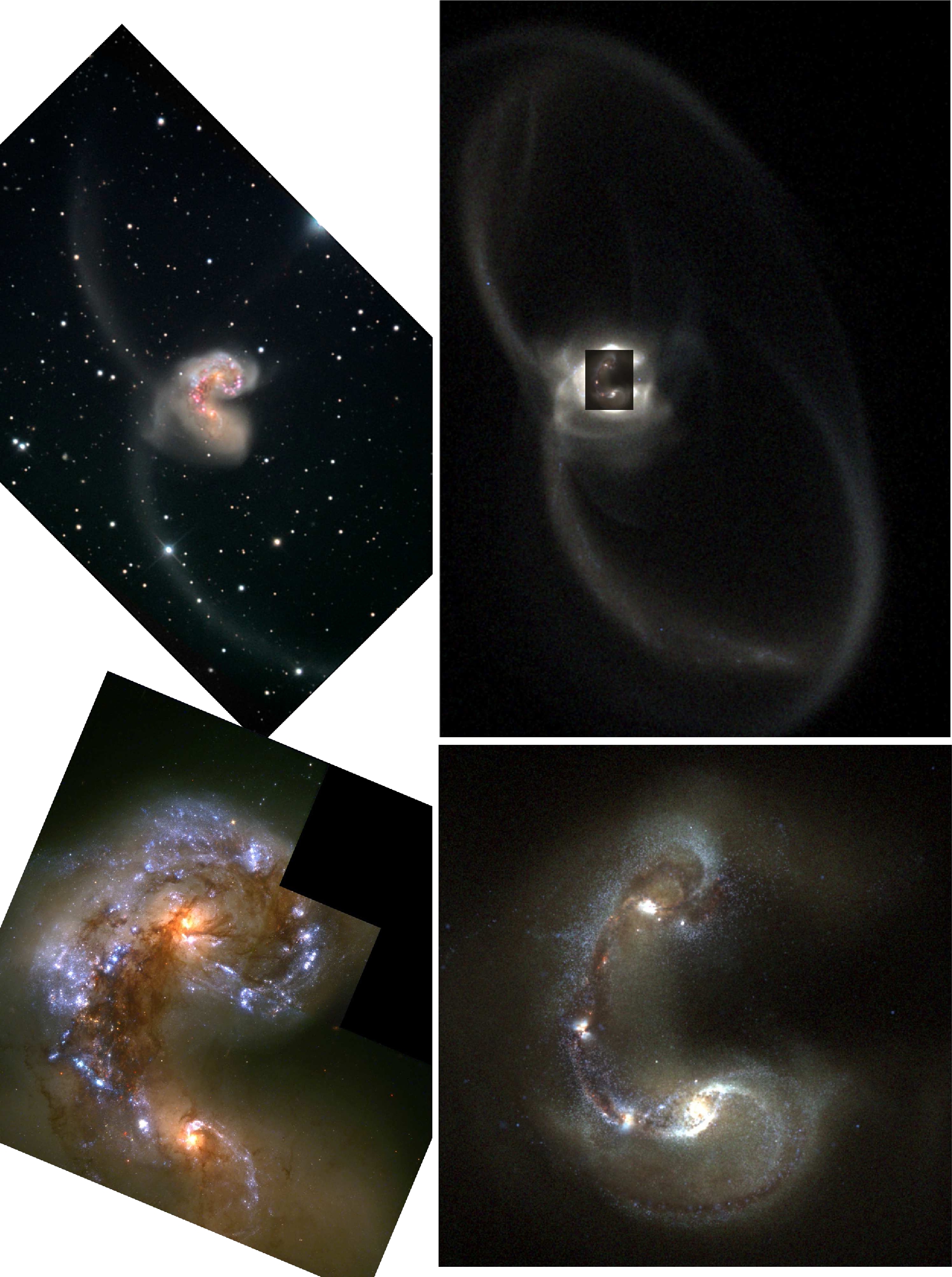
Selected Research Papers
- Chemical evolution of local post-starburst galaxies: implications for the mass-metallicity relation
- Comparison of stellar populations in simulated and real post-starburst galaxies in MaNGA
- The fate of the Antennae galaxies
- Shutting down or powering up a (U)LIRG? Merger components in distinctly different evolutionary states in IRAS 19115-2124 (the Bird)
- Shape asymmetry: a morphological indicator for automatic detection of galaxies in the post-coalescence merger stages
- The Mice at play in the CALIFA survey. A case study of a gas-rich major merger between first passage and coalescence
- NGC 6240: merger-induced star formation and gas dynamics
- One Moment in Time—Modeling Star Formation in the Antennae
- Adaptive optics imaging and optical spectroscopy of a multiple merger in a luminous infrared galaxy